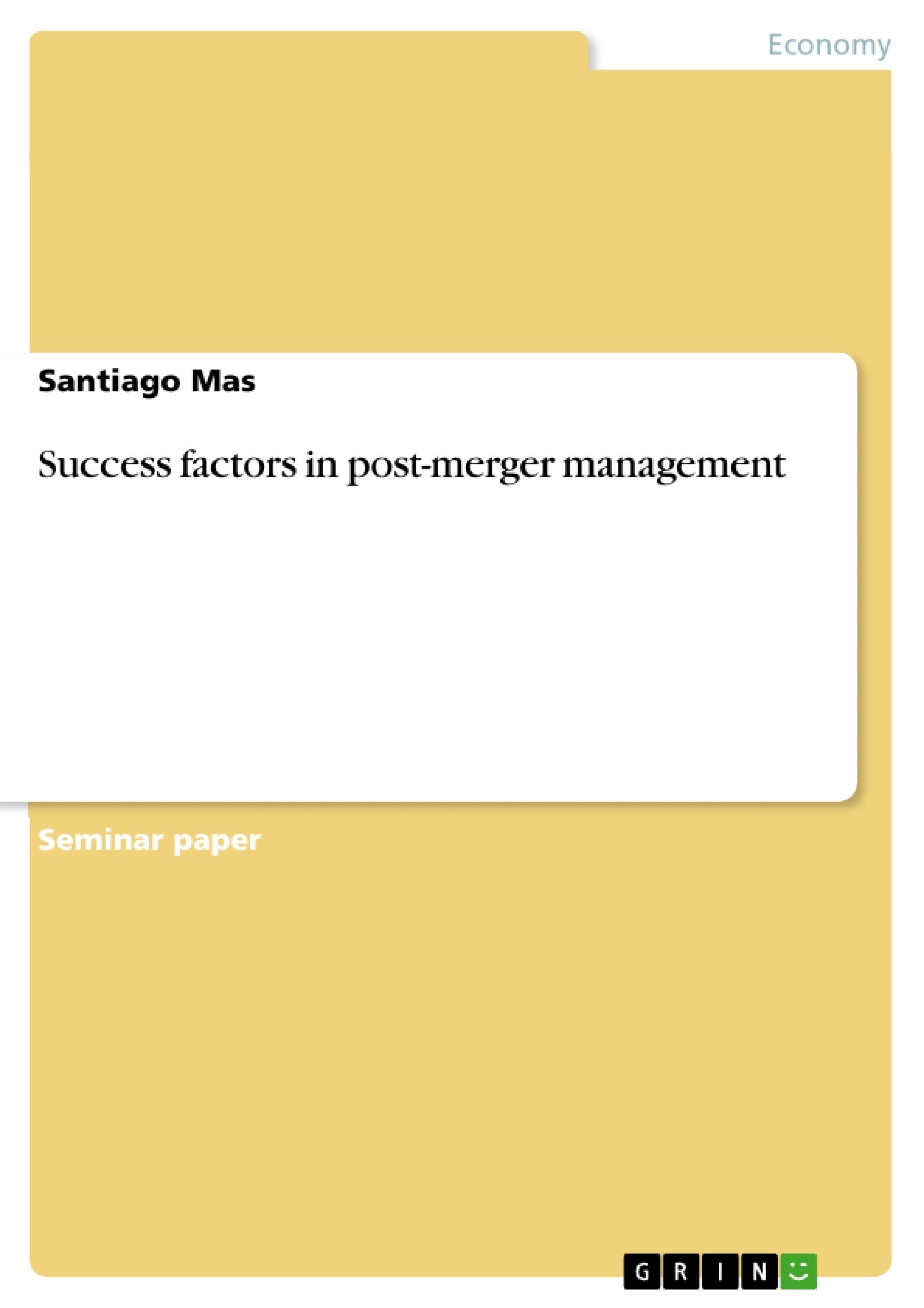This assignment intends to present, analyze and assess the key factors playing a major role in the success of the post-merger integration. Although the statistic says that failed mergers are many more than those being successful, some success stories such as those from ABB, Chemical/Manufacturer’s Hanover, Bank of America/Schwab or GE Capital show that successfully managing corporate performance after a merger process is not only possible but also highly rewarding for those companies managing to do it. Therefore in this assignment we will try to give an answer to the following questions:
Why some merger processes are not successful while some others are? What are the differences between them? What are the causes?
Inhaltsverzeichnis (Table of Contents)
- Introduction
- Problem Definition and Objectives
- Scope of Work
- Theoretical principles of Merger Management
- Merger objectives: gains and efficiencies
- Phases of a merger
- Keys to a successful post-merger management (PMM)
- Objective(s)
- Strategy
- Communication
- Leadership and management
- Corporate culture and cultural compatibility
- Change management
- Post-merger integration controlling
- Conclusions
- References
- Internet References
Zielsetzung und Themenschwerpunkte (Objectives and Key Themes)
This paper analyzes the success factors of post-merger management (PMM). It examines the challenges and opportunities presented in merging two different business entities to improve overall performance and increase competitive advantage by leveraging synergies. The paper also discusses the importance of a well-defined strategy, effective communication, strong leadership, cultural compatibility, and change management in achieving a successful merger integration.
- Challenges and opportunities in post-merger management.
- The importance of a well-defined strategy for merger integration.
- The role of effective communication in successful mergers.
- The significance of leadership and management in post-merger integration.
- The impact of cultural compatibility and change management on merger success.
Zusammenfassung der Kapitel (Chapter Summaries)
The paper begins by defining the problem of post-merger management and outlining the scope of the study. It then dives into the theoretical principles of merger management, exploring the objectives and potential gains that mergers aim to achieve. The third chapter focuses on the various phases of a merger process, providing a structured framework for understanding the different stages involved. Finally, the paper delves into the key factors for successful post-merger management, examining crucial aspects such as strategy, communication, leadership, corporate culture, change management, and post-merger integration controlling.
Schlüsselwörter (Keywords)
Mergers and Acquisitions (M&A), Post-merger Management (PMM), Post-merger Integration (PMI), Strategic Integration, Cultural Compatibility, Change Management, Synergies, Organizational Change, Competitive Advantage, Financial Performance, Communication, Leadership, Corporate Culture, Controlling.
- Quote paper
- Santiago Mas (Author), 2017, Success factors in post-merger management, Munich, GRIN Verlag, https://www.grin.com/document/437672




